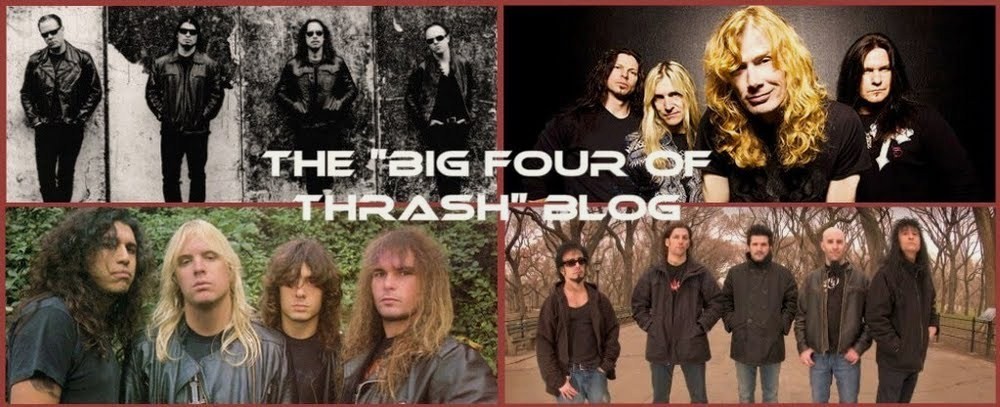Super Collider
Why all the hate? It seems the majority of people out there expect Mustaine and Megadeth to template its sonic signature and release slightly modified copies every few years for public consumption. "Super Collider" is one of the best Megadeth offerings in years precisely because the band has taken some risks and shown the ability to step outside the thrash and speed box they helped pioneer.There’s plenty to like here, a little to love, and simply no reason to hate. Sure, there are a lack of uptempo thrashers: Much of the album clocks in at the mid-tempo range, but there’s enough to make you happy, and plenty of new shades of Megadeth to enjoy.
The band once again tapped producer Johnny K (Machine Head, Sevendust, Disturbed) to help helm the record.The album kicks off in classic Megadeth fashion: “Kingmaker” is vintage Dave Mustaine and Dave Ellefson. A strong start to the record, it is packed with pulse-racing riffery, rumbling bass, an onslaught of stick and skin work, and Mustaine’s trademark grimace and growl vocals.The title track takes Megadeth a bit out of their zone and more into a classic hard rock sound. “Super Collider” is a perfect song for cranking up the Harley and hitting the highway. It’s not truly built for Mustaine’s vocal style, but he makes it work. More important, we see Mustaine stretching his songwriting chops and letting go of the need for speed. Ellefson has some sweet bass runs on this track.A great opening guitar lead-in sets off “Burn!”, with stellar fretwork from Chris Broderick throughout. There is even some nice bluesy groove in the chorus. Meanwhile, “Built For War” adds a touch of Rob Zombie chug on the verses. The song helps establish "Super Collider" as a powerful yet varied sonic slab of metal. Sure there are a bunch of lyrical clichés here, but this is heavy metal damn it, and we worship at the altar of such common man imagery: “Built for war, what do you think your fists are for?” Much like “Off the Edge” before it,”Dance in the Rain” looks at the darkness of our world and you can just feel Mustaine seething with the current political state of America. Unlike the former, which is something of a quietly easy track to dismiss, “Dance in the Rain” is a memorable mid-tempo rocker. A dreary intro leads into Mustaine laying out our daily misery. Shawn Drover, who is exceptional throughout this album adds some tasty nuances here. The subtle tempo changes add depth. Just before the four-minute mark, the song jaunts off in another direction filled with fast-descending nano-riffs and some nice cameo vocals from David Draiman (Disturbed, Device). It sort of feels somewhat like two song ideas were spliced together, but it works. It’s big and bombastic, and should be a beast live. “Beginning of Sorrow” is a full band effort and offers perhaps the most modern feel of any track on the record. Ellefson’s bass just throbs on this one. Nice spiraling lead work overlays heavy and undulating rhythms.“The Blackest Crow” really takes Megadeth in a brave new direction. The intro begins with an eerie cinematic vibe that recalls a war-torn Southern backwoods with its ganjo plucking and military drum beat. It’s easily the album’s most intriguing track, and a real treat for fans who can appreciate the maturation in songwriting. Mustaine even whips out of bit of slide guitar. Lyrically the song tackles Alzheimers as does the track “Forget to Remember” which itself feels like a Great White song with bigger, hairier balls. The vocal whispers add a nice touch.The guys get their blues groove on “Don’t Turn Your Back” before spinning it into one of the album’s few juggernauts. The album closes out with a beefy version of Thin Lizzy‘s “Cold Sweat”. They pay it due respect but crank up the edge to 11.
In all, "Super Collider" proves that Megadeth is more than a one-riff pony, and the variety displayed here is perhaps long overdue from these metal icons who no longer have anything to prove. Let the elitists pass over one of the band’s finer moments so they can languish in their limited comfort-zones. "Super Collider" delivers on every level and those who take the time to soak it in will hear its magnitude (Rustyn Rose for Examiner.com wrote this review, and it's a properly detailed, overall correct review as compared to the overwhelming negative reviews coming out from every corner of the world, including Allmusic.com. Allmusic seemed "unhappily" bias this time around, and this album deserves a well balanced persective. One will ultimately come to a conclusion, however, if they care for the record regardless of a review. So, in the end the music will speak for itself, so check it out today!).


















